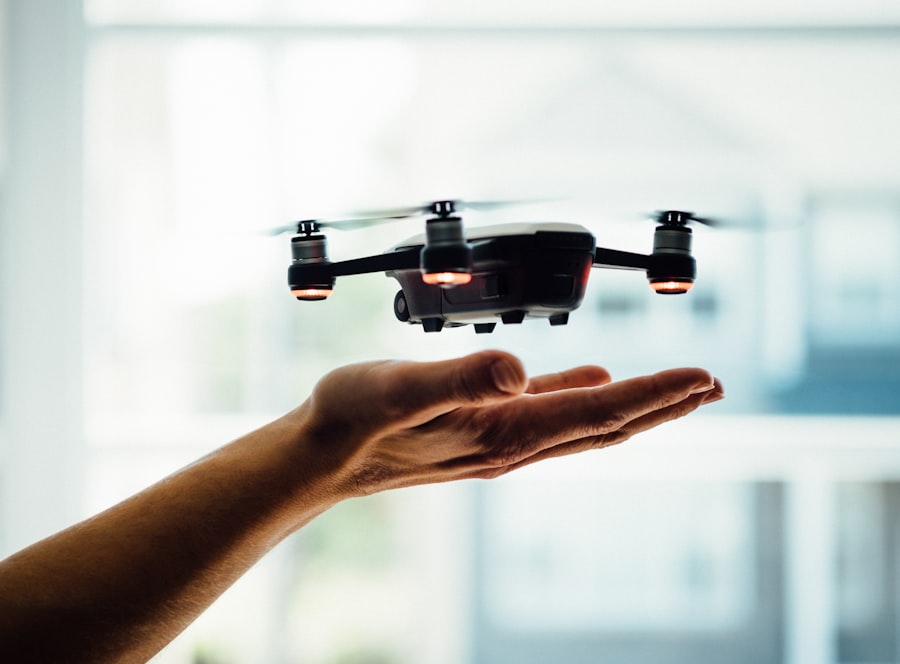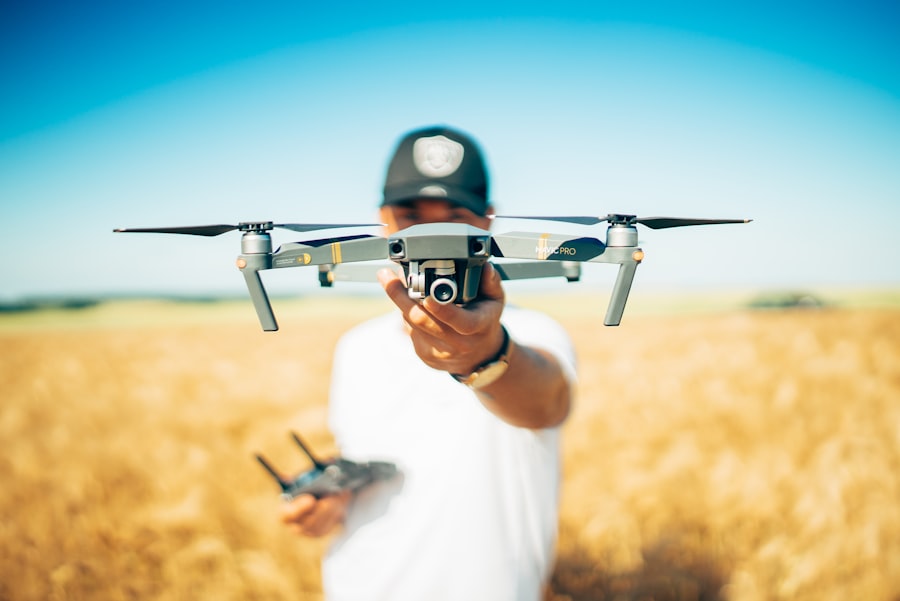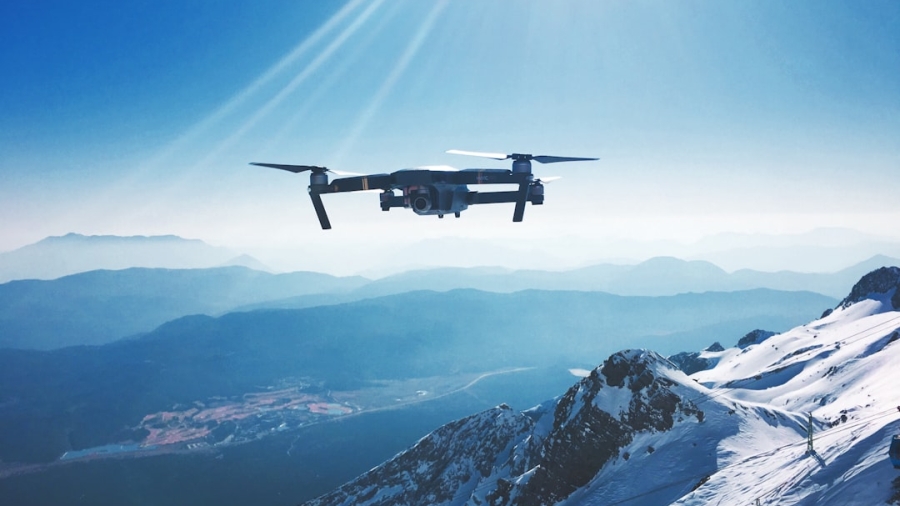The advent of drone technology has revolutionized various sectors, and one of the most promising applications is in delivery services. Drones, or unmanned aerial vehicles (UAVs), have transitioned from military use to commercial applications, capturing the imagination of businesses and consumers alike. The concept of using drones for delivery is not merely a futuristic vision; it is becoming a reality as companies explore innovative ways to enhance logistics and supply chain efficiency.
Major corporations like Amazon, Google, and UPS are investing heavily in drone technology, aiming to streamline their delivery processes and meet the growing demand for faster service. The integration of drones into delivery services offers a myriad of advantages, including reduced delivery times, lower operational costs, and the ability to reach remote or hard-to-access locations. As urban areas become increasingly congested, traditional delivery methods face significant challenges, such as traffic delays and environmental concerns.
Drones present a viable alternative, capable of bypassing ground traffic and delivering packages directly to consumers’ doorsteps. This shift not only enhances customer satisfaction but also aligns with the broader trend of digital transformation in logistics.
Key Takeaways
- Drones are revolutionizing delivery services by offering faster and more efficient delivery options.
- Drone delivery services are cost-effective and sustainable, reducing the carbon footprint of traditional delivery methods.
- Challenges and limitations of drone delivery services include limited payload capacity and weather conditions.
- Safety and security concerns with drone deliveries include the risk of mid-air collisions and potential misuse of drones.
- Regulatory and legal implications of using drones for deliveries are still being developed and vary by country.
Efficiency and Speed of Deliveries with Drones
One of the most compelling benefits of drone delivery services is their unparalleled efficiency and speed. Drones can travel in a straight line from point A to point B, significantly reducing the time it takes to deliver goods compared to traditional ground transportation methods. For instance, a drone can cover a distance of several miles in a matter of minutes, whereas a delivery truck may take much longer due to traffic congestion and road conditions.
This capability is particularly advantageous for time-sensitive deliveries, such as medical supplies or perishable goods, where every minute counts. Moreover, the operational efficiency of drones extends beyond mere speed. Drones can operate autonomously, utilizing advanced navigation systems and artificial intelligence to optimize flight paths and avoid obstacles.
This automation reduces the need for human intervention, allowing companies to allocate resources more effectively. For example, during peak shopping seasons or emergencies, drones can be deployed rapidly to meet surges in demand without the logistical challenges associated with scaling up a traditional delivery fleet. The ability to maintain consistent delivery times enhances customer trust and loyalty, further solidifying the role of drones in modern logistics.
Cost-Effectiveness and Sustainability of Drone Delivery

In addition to improving efficiency, drone delivery services offer significant cost advantages over traditional delivery methods. The operational costs associated with drones are generally lower due to reduced fuel consumption and maintenance expenses. Drones are powered by electricity, which can be generated from renewable sources, making them a more sustainable option compared to fossil fuel-powered vehicles.
This shift not only lowers costs but also aligns with the growing emphasis on corporate social responsibility and environmental sustainability. Furthermore, the scalability of drone operations contributes to their cost-effectiveness. As demand for deliveries increases, companies can deploy additional drones without the need for extensive infrastructure investments.
Unlike traditional delivery systems that require a fleet of trucks and drivers, drone operations can be expanded with relative ease. This flexibility allows businesses to adapt quickly to changing market conditions while keeping operational costs in check. For instance, during the COVID-19 pandemic, many retailers turned to drone deliveries as a way to maintain service levels while minimizing human contact, demonstrating how drones can provide a cost-effective solution in times of crisis.
Challenges and Limitations of Drone Delivery Services
Despite the numerous advantages that drones offer for delivery services, several challenges and limitations must be addressed before widespread adoption can occur. One significant hurdle is the technological limitations of current drone systems. While advancements have been made in battery life and payload capacity, many drones still face restrictions on how far they can travel on a single charge or how much weight they can carry.
These limitations can hinder their ability to serve larger geographic areas or deliver heavier items. Additionally, environmental factors such as weather conditions can impact drone performance. High winds, rain, or snow can pose risks to flight safety and reliability, necessitating careful planning and monitoring before dispatching drones for deliveries.
Companies must develop robust systems to assess weather conditions in real-time and make informed decisions about when it is safe to operate drones. Furthermore, the integration of drones into existing logistics networks requires significant investment in infrastructure, including charging stations and maintenance facilities, which can be a barrier for smaller businesses looking to adopt this technology.
Safety and Security Concerns with Drone Deliveries
Safety and security are paramount concerns when it comes to implementing drone delivery services. The potential for accidents involving drones raises questions about public safety, particularly in densely populated urban areas. Drones must be equipped with advanced collision avoidance systems to minimize the risk of crashes with buildings, trees, or other aircraft.
Additionally, there is the potential for drones to be hacked or tampered with, leading to unauthorized access to sensitive information or even theft of delivered goods. To address these concerns, companies must invest in comprehensive safety protocols and security measures. This includes regular maintenance checks on drone hardware and software, as well as training for operators on emergency procedures.
Moreover, public perception plays a crucial role in the acceptance of drone deliveries; companies must engage with communities to educate them about safety measures and address any fears related to privacy invasion or noise pollution caused by drone operations.
Regulatory and Legal Implications of Using Drones for Deliveries

The regulatory landscape surrounding drone deliveries is complex and varies significantly from one jurisdiction to another. In many countries, aviation authorities have established strict guidelines governing the use of drones for commercial purposes. These regulations often include requirements for pilot certification, airspace restrictions, and operational limits such as maximum altitude and distance from the operator.
Navigating this regulatory environment can be challenging for companies looking to implement drone delivery services. In addition to aviation regulations, there are also legal implications related to liability and insurance coverage for drone operations. Companies must consider who is responsible in the event of an accident or damage caused by a drone during delivery.
This necessitates comprehensive insurance policies that cover potential risks associated with drone operations. Furthermore, as drone technology continues to evolve, regulatory frameworks will need to adapt accordingly to ensure safety while fostering innovation in the industry.
Future of Drone Delivery Services
The future of drone delivery services appears promising as technology continues to advance and public acceptance grows. Innovations in battery technology are expected to extend flight times and increase payload capacities, enabling drones to serve larger areas more effectively. Additionally, advancements in artificial intelligence will enhance navigation systems, allowing drones to operate more autonomously and efficiently.
As urbanization continues to rise globally, the demand for rapid delivery services will only increase. Drones are well-positioned to meet this demand by providing an alternative that alleviates traffic congestion and reduces carbon emissions associated with traditional delivery methods. Furthermore, partnerships between technology companies and logistics providers are likely to accelerate the development of integrated systems that combine drones with existing transportation networks.
Moreover, as regulatory frameworks evolve to accommodate drone operations more effectively, we may see an expansion in the types of goods that can be delivered via drones. From food deliveries to medical supplies and even e-commerce packages, the versatility of drones will enable them to play an integral role in various sectors.
The Overall Impact of Drones on Delivery Services
The integration of drones into delivery services represents a significant shift in how goods are transported from suppliers to consumers. With their ability to enhance efficiency and speed while offering cost-effective solutions that align with sustainability goals, drones are poised to transform logistics on a global scale. However, challenges related to technology limitations, safety concerns, regulatory hurdles, and public acceptance must be addressed for widespread adoption.
As advancements continue in drone technology and regulatory frameworks adapt to accommodate these innovations, the future looks bright for drone delivery services. The potential benefits extend beyond mere convenience; they encompass broader implications for urban planning, environmental sustainability, and economic growth within the logistics sector. Ultimately, the impact of drones on delivery services will shape not only how we receive goods but also how businesses operate in an increasingly interconnected world.
While exploring the impact of drones on delivery services, it’s also essential to consider the technological tools that support such innovative services. For instance, effective software solutions are crucial for designing the branding and promotional materials needed to market new delivery methods. A related resource that could be beneficial is an article on the best software for logo design, which can help delivery companies create compelling logos for their drone delivery services. You can read more about these software options by visiting Discover the Best Software for Logo Design Today. This article provides insights into various tools that can enhance the visual identity of delivery services as they adapt to drone technology.
FAQs
What are drones?
Drones, also known as unmanned aerial vehicles (UAVs), are aircraft that are operated without a human pilot on board. They can be controlled remotely by a human operator or autonomously by onboard computers.
How are drones being used in delivery services?
Drones are being used in delivery services to transport goods from one location to another. They are particularly useful for delivering small, lightweight packages over short distances in a quick and efficient manner.
What are the advantages of using drones for delivery services?
Some advantages of using drones for delivery services include faster delivery times, reduced delivery costs, and the ability to reach remote or hard-to-access areas. Drones can also help reduce traffic congestion and carbon emissions associated with traditional delivery vehicles.
What are the challenges of using drones for delivery services?
Challenges of using drones for delivery services include regulatory restrictions, limited payload capacity, weather conditions, and potential safety and privacy concerns. Additionally, the infrastructure for drone delivery, such as landing pads and charging stations, needs to be developed.
What is the impact of drones on delivery services?
The impact of drones on delivery services includes increased efficiency, reduced delivery times, and the potential to revolutionize the logistics industry. However, the full impact will depend on the development of regulations, technology, and public acceptance of drone delivery.

